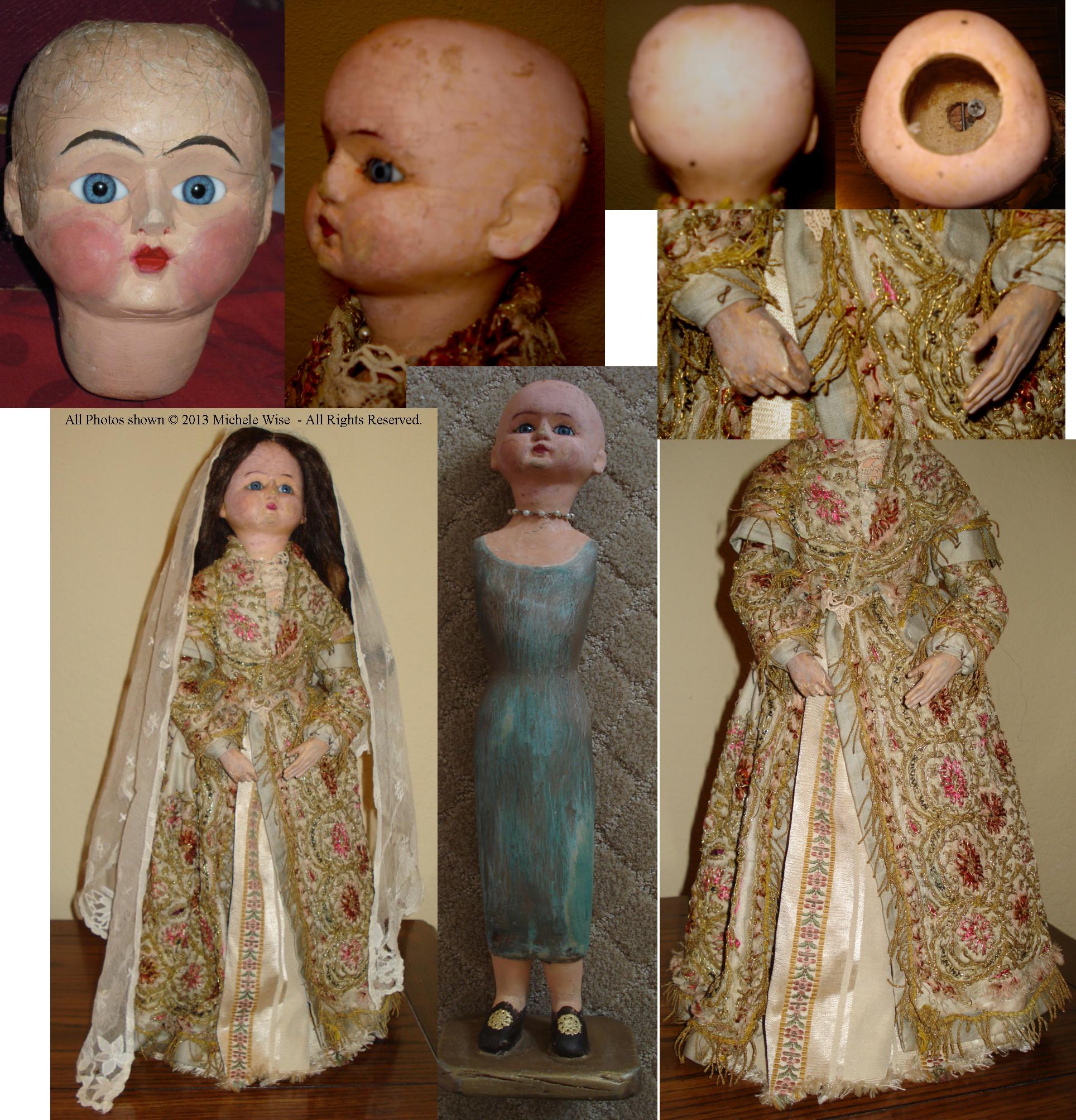This modern version of a Christ child Creche figure is made of hollow plaster, similar to those made in the 18th and 19th centuries. Typically found in Spain, other models were made all over Europe, especially in Italy. In the 20th and 21st centuries, these figures are typically made in Mexico in the cottage industry. They are made as a solid figure, with inset glass eyes, or painted eyes. The more modern versions are now being made in resin and other types of plastic, however the early versions were typically made of Gypsum (plaster) and or Gesso over wood. This infant has a removable metal halo made of gold painted metal.
